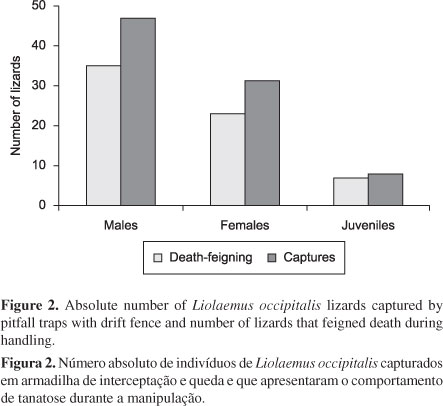Predation is the major selective force that drives the development of a series of defense mechanisms by the species. These mechanisms are efficient in that it limits the ability of predators to detect, recognize and subdue their prey. In lizards for example, the tail loss and locomotor escape are the most common defensive behavior reported on the literature. Additionally, in response to external stimuli, some lizards exhibit a peculiar defensive behavior: death-feigning or thanatosis. Here we describe the first record of death-feigning in a population of Liolaemus occipitalis in a coastal sand dune habitat in Southernmost Brazil. A total of 86 individuals were tested. During handling 75.6% of lizards feigned death. The duration of this behavior was longer when the observer remained closer to the lizards, suggesting the ability of L. occipitalis to evaluate the predation risk.
thanatosis; behavior; sand-dune lizard; pampa; restinga


